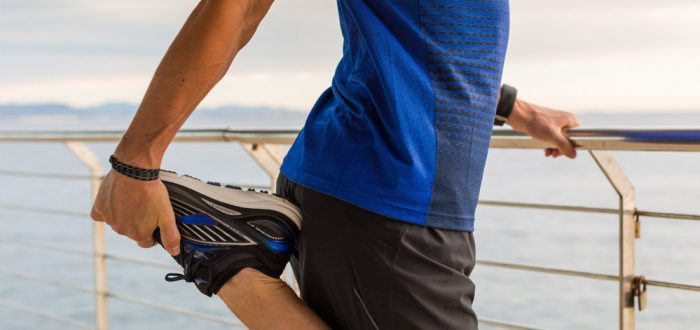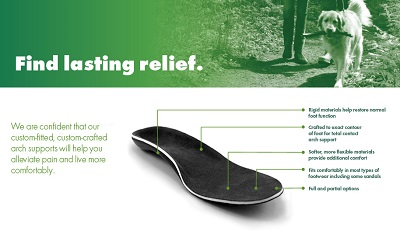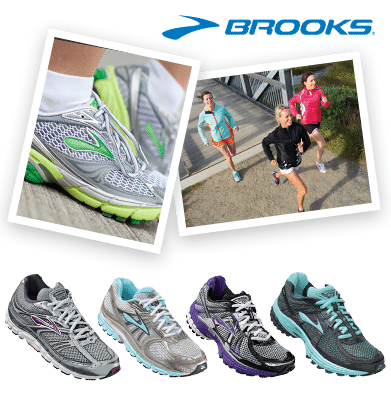If you’re an athlete, you’ll probably thrive on the buzz that comes with taking part in races and competing with others to achieve a goal. However, racing can take a toll on your feet and on your body and it can help to have a methodical approach to your post-race recovery.
As with many things in life, practice makes perfect. Race training is something that you will develop and refine over time as you find out what works for you and yields the best results. As you progress and become more experienced, you will create your ideal routine and will be able to incorporate our top tips into it to make it even more effective for your feet.
Preventing Foot Pain: A Quick Guide
 Many people suffer with foot pain, and athletes often develop problems due to the intensity of their training regimes. Taking care of your feet can make a huge difference to your ability to train and compete, helping to prevent foot injuries and keep you in great shape. The following tips will help you to avoid foot pain when you are exercising:
Many people suffer with foot pain, and athletes often develop problems due to the intensity of their training regimes. Taking care of your feet can make a huge difference to your ability to train and compete, helping to prevent foot injuries and keep you in great shape. The following tips will help you to avoid foot pain when you are exercising:
- When you are preparing to race or train, you should not neglect your warm ups. Warming up is essential to ease your muscles into exercise and prevent tears and sprains in the muscles and ligaments. You should spend a good amount of your exercise session warming up, ensuring that you pay attention to particular exercises for different areas of the feet and legs.
- It is essential to choose your footwear carefully. Wearing the wrong shoes to exercise is the cause of problems for many athletes, and you should always ensure that your footwear is designed for the exercise you are doing. For example, running shoes must be supportive and cushioning, but tennis shoes are designed to allow for twisting and sideways movements as well.
- Learning your limits is essential if you want to protect against injuries, and you should be aware of the dangers of running on concrete for extended periods of time, for example. Take the time to do your research and make decisions that suit you and your lifestyle, and if you feel any pain or discomfort, stop immediately and work out what is going wrong for you.
- Just as warming up is vital to prevent muscle injuries, cooling your muscles down properly is very important to stop muscles from over-tightening and causing cramps and pain. After exercise is another time at which the muscles in the feet are at risk of injury, so pay attention to your cool down routine to protect them.
If you are tempted to cut your training regime short and neglect your foot care, you will be much more likely to sustain an injury. Remember that this is not going to save you time in the long run, since a foot injury will often require a long period of rest and could interrupt your training regime considerably.
9 Ways To Speed Up Your Recovery After A Race:
- Don’t ignore any injuries. Many people do not pay attention to their bodies after a race, and miss the opportunity to address any injuries quickly. Take the time to check over your feet, legs and lower back and ensure that things feel normal (if a little tired!), and seek medical advice as soon as possible if you don’t feel right. Many sporting injuries can worsen over time, and often need long periods of rest to heal, so it will benefit you and your training regime to understand what you are dealing with as soon as possible.
- Use compression. If you haven’t yet tried wearing compression sleeves or socks while you are running, give it a go today! This is a great way to protect your muscles and prevent swelling and inflammation, and is an affordable way to prevent strain injuries, too. Wearing compression products while you are exercising can help you to recover more quickly after a race, so that you will be in great shape for the next one!
- Protect weak points. If you have an existing injury, it is very important to protect the vulnerable area to prevent further damage during your race. Speak to your coach or a medical professional to find out the best way to support a weak point on the body, and consider using an orthosleeve if you need extra support around your knees, ankles or the feet themselves. Protecting an old injury will help to prevent it from reoccurring, and will brace the joint so that it does not become unstable or at risk.
- Wear supportive footwear. After a big race, the muscles and ligaments in the feet will have taken a hit and will need some extra support to nurture them as they recover. Going barefoot may not provide the structured support they need, and we recommend wearing shoes that are cushioned, with arch support included. Visit our professional pedorthists at Foot Solutions to find the footwear that is best suited to your feet and your lifestyle, and we will help you to find a post-race solution that works for you.
- Use custom arch supports. Custom arch supports can be a great solution for all styles of shoe, but they are especially useful in training shoes as your feet come under so much additional stress while you are exercising. It is possible to buy inserts off the shelf, but these will not offer specific contouring and support. A custom arch support is designed from a map of your own foot and made in our laboratory, ensuring that your feet get extra support exactly where it is needed. The material your custom arch supports are made from will depend upon their purpose, and you can try different styles to see which will work best for you.
- Treat your feet. Whatever the type of race you have taken part in, your feet will have borne the brunt of your efforts. After a race is a great time to show your feet some TLC to help them to recover and ensure that they’re in great shape for the next one. Massage is a great way to heal your aching feet and get the blood circulating more effectively, and you can massage your feet at home. There are many great massage balls and pads that you can try, and if you want to really nurture your feet, try massaging them with a few drops of your favourite essential oils in a carrier oil such as sunflower oil. Lavender is a particularly relaxing oil, while peppermint is a refreshing and energising choice.
- Use pain relief cream. If your feet have carried you through a long or challenging race, you’ll probably have noticed that the muscles are sore, even if you are not aware of any strains or sprains. A muscle treatment cream, such as a pain relief cream or Arnica gel, can get to the root of aching muscles and help you to relax and rest without pain. You can talk to us at your local store for recommendations, or speak with your pharmacist to find out what would be the most suitable option for post-race muscle care.
- Let your shoes recover too. After a race, it’s important to remember that your shoes have been under a lot of pressure as well as your feet. You will probably need to clean them, especially if you have been running off-road, and some designs can be washed in a washing machine. It is also a good idea to deodorise your shoes to ensure that they are not harbouring bacteria that could cause an unpleasant foot condition such as Athlete’s Foot. Remember that warm, dark conditions are the best for growing bacteria, so don’t just throw your shoes into a cupboard and forget about them until next time!
- Consider seeing a physiotherapist. If you have sustained an injury in a race or feel that you have a problem in a specific joint or muscle, you should consider seeing a physiotherapist to ensure that your recovery is as straightforward as possible. A physiotherapist will be able to recommend tailored exercises to rehabilitate certain joints and cope with specific conditions, and this will be very helpful in healing the feet or legs and preparing for the next time you race. Speaking with a physiotherapist before you decide to race again after an injury can help to ensure that you are really ready for this and are not likely to cause a reoccurrence of the same problem. A physio may also be able to suggest options such as tape to strap a particular injury during training or a race, for additional support when the vulnerable area is put under stress.
Find Comfortable Shoes in Ireland
Here at Foot Solutions, our experienced pedorthists are on hand to help you to find the best options for your feet. We will take the time to carry out a ten point assessment of your feet and your lifestyle, and then make recommendations that will usually involve comfortable, well-fitted shoes, with comfort socks and/or custom arch supports.
Visit us at Foot Solutions for a professional fitting, or book an appointment online now and find the very best solution for your feet.

































